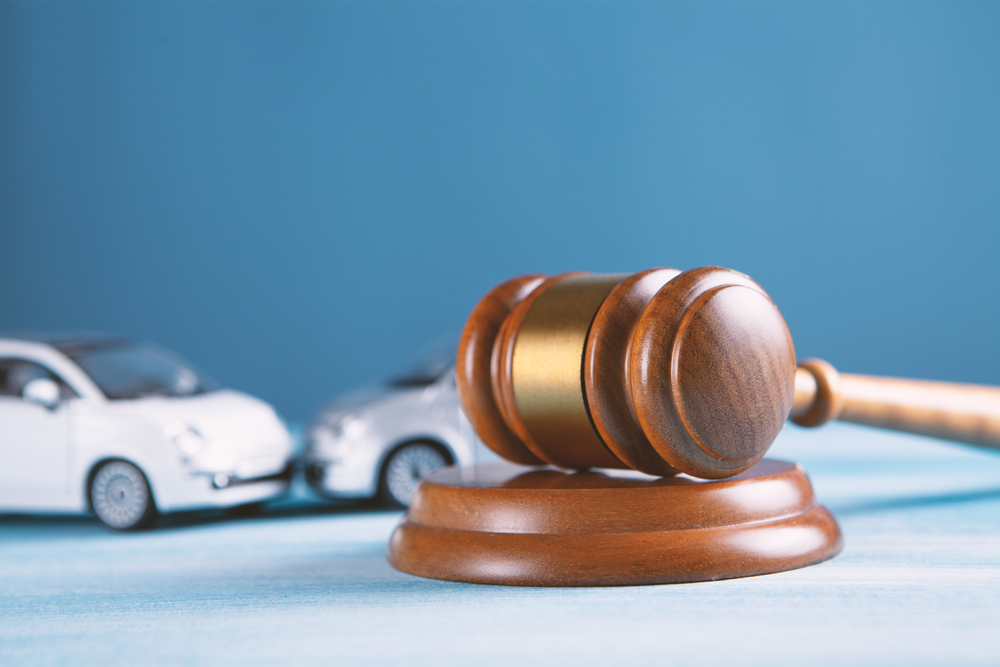Insurance companies frequently look for any excuse to deny car accident claims and shift blame to the injured accident victim. Insurance companies often use this approach to save money and keep their profits in-house.
In some scenarios, the insurance company may allege that you caused or contributed to your accident when, in fact, the other driver was the sole cause of the crash. In that situation, you can introduce evidence, such as police reports and eyewitness statements, to show that the insurance company is wrong and that the other driver was solely at fault. Even if a judge or jury finds that you did contribute to your car crash, you may still be entitled to receive a portion of your damages if your jurisdiction follows a comparative fault model.
Upon suffering injuries in a car crash, you must speak with an experienced Madison car accident lawyer as soon as possible about your legal matter. Your attorney can explain your legal rights and determine your likelihood of success. If the insurance company is disputing fault in your case, your attorney can challenge that assertion by introducing appropriate evidence or filing a lawsuit in the court system on your behalf. Throughout your case, your lawyer will aggressively fight for your legal interests and pursue the monetary recovery you deserve for your losses.
How do Other Drivers Cause Car Accidents?
Other drivers play a significant role in causing car accidents. Some of the most common ways that other drivers cause car accidents include:

- Fatigue – Fatigued driving is akin to impaired or intoxicated driving. Drivers who are excessively tired experience reduced alertness and slowed reaction times, increasing the risk of accidents. Long hours on the road without adequate rest contribute to driver fatigue.
- Distracted driving – Distracted driving occurs when drivers divert their attention from the road. Activities such as texting, using a GPS navigation system, talking on a cellular phone without Bluetooth, adjusting the radio, or roughhousing with vehicle passengers while driving can lead to reduced focus and slower reaction times, increasing the risk of accidents.
- Running red lights and stop signs – Disregarding traffic signals and signs can lead to dangerous intersection collisions. Drivers who fail to stop at red lights or stop signs put themselves and others at risk of T-bone or side-impact accidents that can lead to serious injuries.
- Failing to yield the right-of-way to other drivers and pedestrians at the proper times – When drivers fail to yield the right-of-way as required by traffic rules, it can lead to accidents at traffic intersections or merging points. Failing to yield can result in serious collisions, particularly when one driver incorrectly assumes they have the right of way.
- Reckless driving maneuvers – Aggressive and reckless driving behaviors, including tailgating other vehicles, weaving in and out of busy highway traffic, and ignoring traffic rules, create hazardous conditions while on the road. Such actions increase the likelihood of accidents and endanger everyone sharing the roadway with the at-fault driver.
- Speeding – Excessive speed is a major factor in many car accidents. When drivers exceed speed limits or travel too fast for road or weather conditions, they compromise their ability to react quickly to unexpected situations, leading to collisions with other vehicles, obstacles, or pedestrians.
- Driving under the influence (DUI) – Operating a motor vehicle while under the influence of alcohol or drugs significantly impairs a driver’s ability to make sound judgments and react quickly. DUI is a leading cause of accidents, often resulting in severe injuries and property damage.
If you suffered injuries in a car crash that a negligent driver brought about, your car accident lawyer can aggressively take on the insurance company in your case and fight for your right to recover the monetary compensation you need.
Common Car-accident Injuries
Motor vehicle accidents can result in a wide range of injuries for both drivers and passengers, varying in severity from minor to severe. The extent and nature of these injuries depend upon various factors, such as the collision location, the vehicles’ speeds, and the accident victim’s bodily movements at the time of the accident. Some of the most common injuries that drivers and passengers may suffer in motor vehicle accidents include:
- Internal injuries – The force of a collision may cause damage to internal organs, leading to internal bleeding and organ damage. Since these injuries may not be readily apparent, accident victims must seek prompt medical treatment as quickly as possible after their accident.
- Spinal cord injuries – Severe car accidents can result in spinal cord injuries, leading to paralysis or loss of sensation below the affected area. These injuries often have a profound and lasting effect on an individual’s life and ability to care for themselves.
- Cuts and bruises – Impact with vehicle components or flying debris can cause cuts, bruises, and abrasions for accident victims. While these injuries may be less severe, they can still result in pain and discomfort – not to mention the need for medical treatment.
- Traumatic head and brain injuries – Head injuries, including concussions and traumatic brain injuries (TBIs), can occur if the accident victim’s head strikes a hard surface or experiences abrupt deceleration. Symptoms range from mild headaches to more severe cognitive impairments, like concussions and comas.
- Broken bones – The effects of a motor vehicle collision can cause fractures in various bones, such as the arms, legs, ribs, or pelvis. The severity of these fractures often depends upon the crash intensity.
- Burn injuries – In car accidents involving fire or explosions, drivers and passengers may suffer severe burn injuries. These injuries can range from minor burns to more severe, life-threatening burns.

- Whiplash – Whiplash is a prevalent injury in rear-end collisions and other car accidents, causing the sudden and forceful back-and-forth movement of the accident victim’s neck. This abrupt movement can lead to neck stiffness, pain, and headaches.
- Post-traumatic stress disorder (PTSD) – Emotional trauma is also a common consequence of motor vehicle accidents. PTSD can develop, causing symptoms such as anxiety, nightmares, and accident flashbacks.
- Soft tissue injuries – Muscles, ligaments, and tendons can undergo strains or sprains in a car accident, often causing pain and limited mobility. Soft tissue injuries may not be immediately apparent and can worsen over time.
- Psychological effects – Beyond physical injuries, motor vehicle accidents can have a profound psychological effect on accident victims. Anxiety, depression, and a fear of driving (or riding in) a car are common emotional responses after a traumatic crash.
Prompt medical attention is crucial for assessing and treating injuries after a motor vehicle accident. Even seemingly minor injuries can become much more serious if the accident victim does not seek prompt medical treatment.
While you attend medical appointments for your injuries, your car accident attorney can start gathering important documents, including police reports, witness statements, and medical records to date. They can send a comprehensive settlement demand package for the insurance company adjuster to review.
What do I Need to Prove to Receive Monetary Damages for my Injuries?
Prevailing in a car accident case requires establishing several key legal elements to demonstrate liability and justify compensation. While specific requirements may vary by jurisdiction, the following are fundamental elements commonly involved in car accident cases:
- Duty of care – To establish fault or liability, the injured accident victim must first establish that the other driver owed them a legal duty of reasonable care. In the context of driving, all motorists generally owe a duty to drive safely and responsibly – and following all prevailing traffic laws and regulations.
- Breach of the legal duty of care – The injured accident victim must also show that the other driver breached the legal duty of care owed to them. This breach can involve speeding, distracted driving, or failing to yield the right-of-way. Establishing a breach of legal duty is crucial for proving negligence in a car accident case.
- Causation – Establishing a causal connection between the defendant’s breach of duty and the injuries the accident victim suffered is essential. This requires demonstrating that the at-fault driver’s actions (or inactions) directly led to the accident and subsequent harm.
- Proximate cause – Proximate cause refers to a legal concept that limits liability to consequences that are reasonably related to the at-fault driver’s actions. The injured accident victim must establish that the harm suffered was a foreseeable result of the at-fault driver’s breach.
- Recoverable damages – The accident victim must legally prove that they suffered actual damages, such as medical expenses, property damage, lost income, and pain and suffering, as a direct result of the car accident. Damages are critical in determining the total monetary compensation the accident victim is entitled to recover in their personal injury case.
- Negligence – Many car accident cases revolve around the concept of negligence. Establishing negligence involves demonstrating that the at-fault driver failed to exercise reasonable care, leading to the accident and resulting injuries.

Eyewitness testimony and expert witnesses may help injured accident victims establish their legal burden of proof. Eyewitnesses who can provide credible accounts of the accident can be valuable in establishing the sequence of events. Expert witnesses, such as accident reconstruction specialists or medical professionals, may provide additional insight into the case. For example, a medical provider can establish the causal relationship between the accident victim’s injuries and the car crash and/or demonstrate that the accident victim suffered permanent injuries.
Also, some jurisdictions apply the concept of comparative negligence, where the accident victim’s financial recovery may be reduced if evidence shows that they caused or contributed to their accident. However, depending on the circumstances, they are often still eligible for damages for their injuries.
Steps to Take if the Insurance Company Says You Caused or Contributed to Your Car Accident
Insurance companies have every incentive to deny or limit liability for a car accident claim. After all, denying/limiting fault for an accident can significantly reduce or eliminate the monetary payout they have to send you for your injuries.
Facing a denial of liability from the insurance company can be frustrating, but there are specific steps you can take to address the situation. Those steps include:
- Carefully review the claim denial letter – Carefully read the denial letter that the insurance company provides and ensure you understand why they have cited for denying liability. This information will guide you in your next steps.
- Gathering the necessary evidence – Collect all relevant evidence supporting your claim. This may include photographs of the accident scene, eyewitness statements, police reports, and any other documentation that can refute the insurer’s reasons for denial.
- Consulting with an experienced attorney about the denial – Seeking legal advice is crucial at this stage. An experienced personal injury attorney can assess the claim denial, review your case, and provide guidance on the best course of action. They can also communicate with the insurance company on your behalf.
- Writing a response to the insurance company’s denial letter – Prepare a comprehensive response to the claim denial, addressing each point the insurance company raises. Include any additional evidence or information that strengthens your case, and be clear and concise in your communication.
- Requesting an internal review of the insurance company’s denial decision – Some insurance companies have an internal review process. Request a review of the denial, providing your response and supporting evidence. This step allows the insurer to reconsider its denial decision.
- Submitting to mediation or arbitration – If an internal review does not yield a favorable outcome, explore alternative dispute resolution (ADR) methods such as mediation or arbitration. These processes can provide a less formal and quicker resolution in your case.
- Litigate your case in the state court system – If you and your attorney have exhausted all other avenues, and the denial persists, you may need to consider filing a lawsuit against the at-fault party in court. Your attorney will guide you through the legal process, including gathering evidence, filing court documents, and representing you at all in-court legal proceedings.

Contact a Car Accident Lawyer in Your Area Right Away
If the insurance company alleges that you caused or contributed to your recent car accident, you must consult an experienced personal injury attorney as soon as possible. Your lawyer can aggressively advocate for your legal rights and interests, dispute the insurance company’s findings, and pursue the compensation you deserve for your accident-related losses.
 Calls Answered 24/7
Calls Answered 24/7









